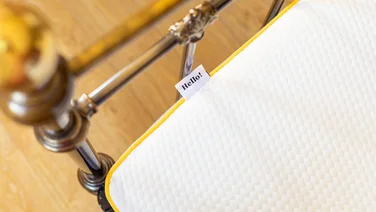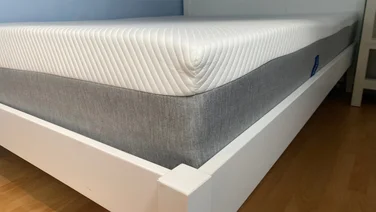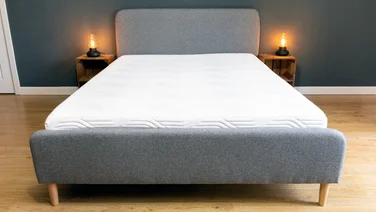To help us provide you with free impartial advice, we may earn a commission if you buy through links on our site. Learn more

If you’re strapped for cash, or just short on space, you may have found yourself wondering whether you could put your mattress on the floor and skip the bed frame altogether. On the surface, it may seem like a good idea and, sure, there are some benefits; however, placing a mattress directly onto the floor could come with some pretty major drawbacks, and it’s a good idea to be aware of them before making any decisions.
We’ll take a look at some of the pros and cons of placing your mattress directly onto the floor and, ultimately, assess whether or not it’s a good idea at all.
READ NEXT: Best mattress
What are the pros of putting your mattress on the floor?
There are several reasons why you might be considering putting your mattress on the floor. Here are a few of the most common:
- It saves space (sort of) – In a world where space comes at a premium, anything that can help to save on it is an appealing prospect and placing a mattress directly on the floor can create the illusion of having a bigger room.
- It saves money – Mattresses are expensive and so are bed frames. Cutting one of them out of the equation certainly has the potential to save you some money. Of the two, it’s much more comfortable to sleep on a lone mattress than on a bare frame.
- It could reduce back pain – Some research suggests that sleeping on a firmer surface could help to relieve back pain. However, the same could arguably be achieved by using a firm mattress on a bed frame.
- It’s cooler – Hot air rises, so sleeping closer to the floor could help hot sleepers stay cooler. That being said, modern cooling mattresses are very effective at regulating temperature, particularly when used as intended with a bed frame.
READ NEXT: Best mattresses
What are the cons of putting your mattress on the floor?
Unfortunately, putting your mattress directly on the floor comes with some fairly serious drawbacks. Here’s what you should consider before reaching a decision:
- Reduced airflow – Mattresses are often designed to be used in conjunction with proper bed frames, and placing yours directly onto the floor may mean that it’s unable to regulate temperature as effectively because of the reduced airflow around the mattress.
- Mould growth – Sweat and body oils can collect in the mattress which, particularly when combined with the reduced airflow, could encourage the growth of mould and mildew, especially if it’s humid. Not only is this unpleasant, but it also has the potential to make you seriously ill.
- Allergies – The floor is home to dust, pet dander and dead skin, and this makes it a breeding ground for mites. The closer you are to it, and them, the greater the chance of inhaling these carpet-dwelling nasties and having them irritate your respiratory system.
- Bugs – A bed frame puts a little extra distance between you and the insect world. Without one, any spiders or other creepy crawlies that wander into your bedroom have easy access to share your bed whenever they fancy.
READ NEXT: Emma Original vs Simba Hybrid: Which is better?
Should you put your mattress on the floor?
So, on balance, is it a good idea to put your mattress directly on the floor? We don’t think so, and the executive director of the National Bed Federation and Bed Advice UK, Tristine Hargreaves, agrees:
“You should really only put your mattress on the floor in an emergency (ie – if you are waiting for delivery of a base to place the mattress on) and only for a short period of time,” says Hargreaves. “A floor is an unforgiving surface that can cause all sorts of problems, including shortening the mattress’ lifespan. Not only that, using a mattress on the floor will almost certainly make any
[manufacturer’s]
guarantee null and void.”






